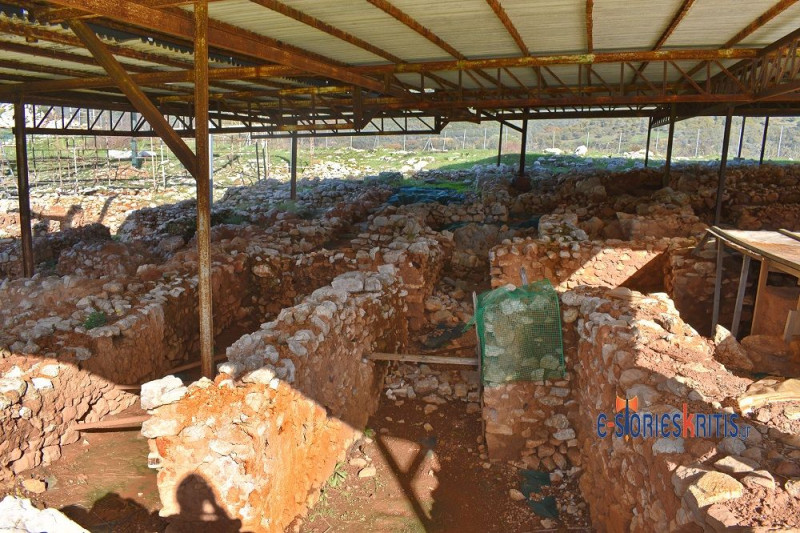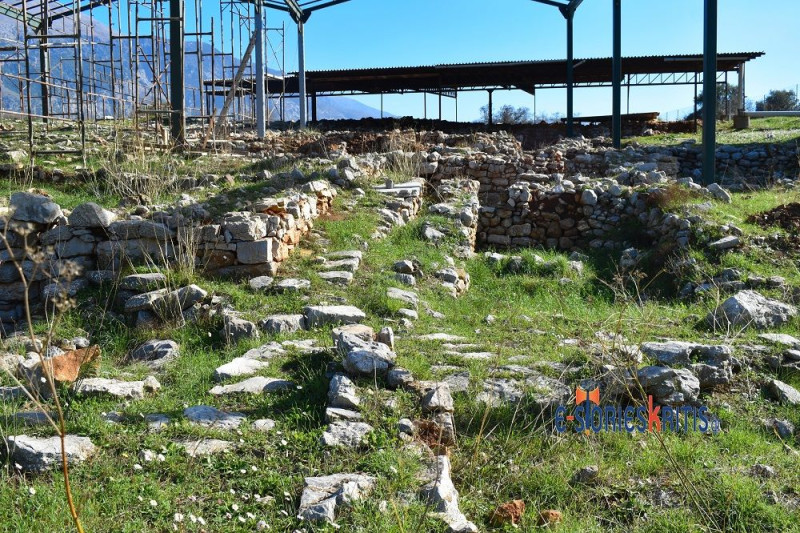North-east of the village of Monastiraki, at the site of Kokkinos Harakas, palatial buildings from the Minoan era have been identified by excavations that began in 1980
The Ministry of Culture is proceeding with the installation of an active fire protection system, in the accessible part of the Minoan palatial center, in Monastiraki of the Municipality of Amari, Rethymno, as part of the project to highlight the archaeological site.
The Minoan palatial center of Monastiraki is located in the “Red Charakas” location, in the Amari valley, at the western foothills of Psiloritis, south of Rethymno and is estimated to have occupied approximately 300 acres.
The main phase of use of the space dates back to the Palaeopalatial period (1900 – 1700 BC).
the Minoan palatial center in Monastiraki, closely connected with the palace of Phaistoswas founded in an advantageous position, from where the natural passage connecting the north and south coast of the island was controlled.
At the core of the residential complex stands out a building with cyclopean masonry and a jagged facade, in which the Minoan hall with columnswhich is thought to have had a cult use.
The palatial center had warehouseswhere a significant number of pithos for the storage of goods, cooking areas, workshops, residential areas were discovered.
The storage area is the largest that has been found in a Minoan palace to date.
In the area has also been found room with 150 fillingswhich has been interpreted as the first seal record. Here, the palaeopalatial architectural remains are preserved in extremely good conditionas the palace was abandoned at the end of the Palaeopalatial period and was never intensively inhabited again.
In fact, according to e-storieskritis.gr, the palatial center in Monastiraki was first excavated, partially, by German archaeologists, members of the Army of Occupation during the Second World War with forced labor of workers from the surrounding villages. It is even said that those bthey tore and removed from the place the second seal of Minos.
Of particular interest is the integrated rainwater management system, which dates back to the end of the Palaeopalatial period (1700 BC) and is currently the earliest and the only example of the period.
The palatial center of Monastiraki was destroyed by an earthquake and the subsequent fire at the end of the Palaeopalatial periodas happened in the other palatial centers and in the great palaces of Crete.
However, in contrast to the latter, Monastiraki was abandoned and was not rebuilt in the Neopalatial period.
Fire protection system for its elevation
The active fire protection of the site is part of the overall framework of the interventions to upgrade the archaeological site, but also in the general program implemented by the Ministry of Culture to prevent the effects of climate change on cultural heritage.
With the completion of the works, which also include actions to shape tour routes and appropriate signage, the already visitable archaeological site of Monastiraki Amari with the important archaeological findingsbecomes safe for visitors, workers and for monuments it contains”.
As part of the project, the installation of portable dry powder fire extinguishers, the installation of a permanent water-supplying fire-fighting network, consisting of 11 fire-fighting nests, the construction of a water tank, a fire-fighting supply complex, and a fire-fighting network are foreseen. Tool fire stations are located in three parts of the site, while portable fire extinguishers are located in the fire engine room.
Source :Skai
I am Frederick Tuttle, who works in 247 News Agency as an author and mostly cover entertainment news. I have worked in this industry for 10 years and have gained a lot of experience. I am a very hard worker and always strive to get the best out of my work. I am also very passionate about my work and always try to keep up with the latest news and trends.












